You face tight deadlines in manufacturing, but picking the wrong aluminum alloy leads to casting defects, wasted materials, and unreliable parts that fail under stress. These missteps escalate quickly, inflating costs by up to 20%, delaying shipments, and eroding trust with clients who demand precision in high-stakes industries like automotive and aerospace. This guide breaks down aluminum die casting alloys, highlighting key traits, comparisons, and selection tips so you can optimize performance, cut waste, and deliver superior components efficiently.
Key Characteristics of Aluminum Die Casting Alloys
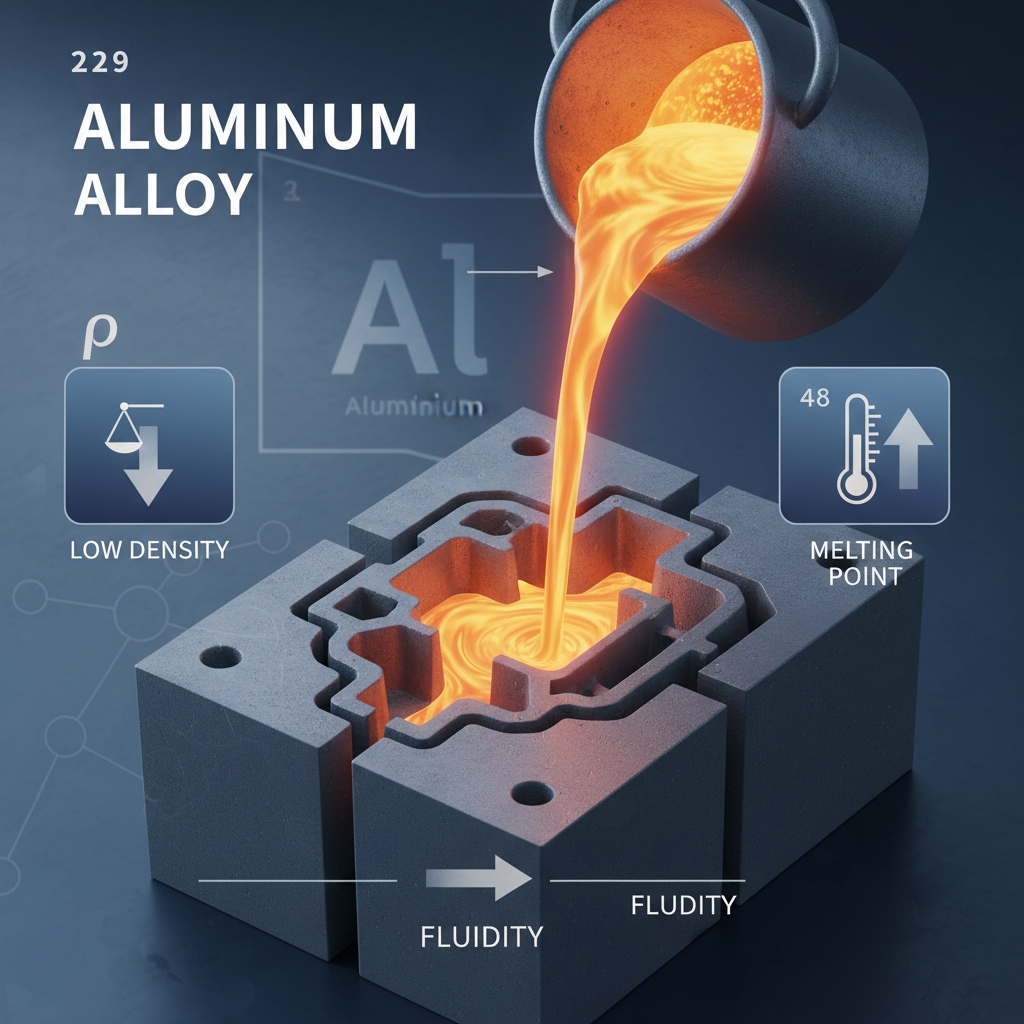
Aluminum die casting alloys excel due to their low density and high fluidity, making them ideal for complex shapes in high-volume production.
What Defines Aluminum Die Casting Alloys?
- Low melting point around 660°C enables quick cycles and energy savings.
- Density of 2.7 g/cm³ supports lightweight designs without compromising strength.
- Alloying elements like silicon enhance flow for intricate geometries.
Now that you see the basics, consider how these traits influence your project.
How Do Compositions Vary in Aluminum Die Casting Alloys?
- Silicon boosts fluidity, allowing you to cast thin walls with fewer defects.
- Copper adds strength but increases corrosion risk in humid environments.
- Magnesium improves weldability, ideal for assemblies requiring post-casting joins.
Why Follow Standards for Aluminum Die Casting Alloys?
| Alloy Element | Role | Impact on Casting | |
|---|---|---|---|
| Silicon | Fluidity enhancer | Reduces viscosity, eases mold filling; ideal for intricate parts but may increase porosity if over 12%. |
Analysis: Balancing elements like silicon optimizes flow while minimizing defects, directly improving your yield rates by 10-15%.
Key Takeaway Mastering core traits ensures you select die casting alloys that align with design needs, streamlining production and boosting part reliability.
Process Impacts of Aluminum Die Casting Alloys
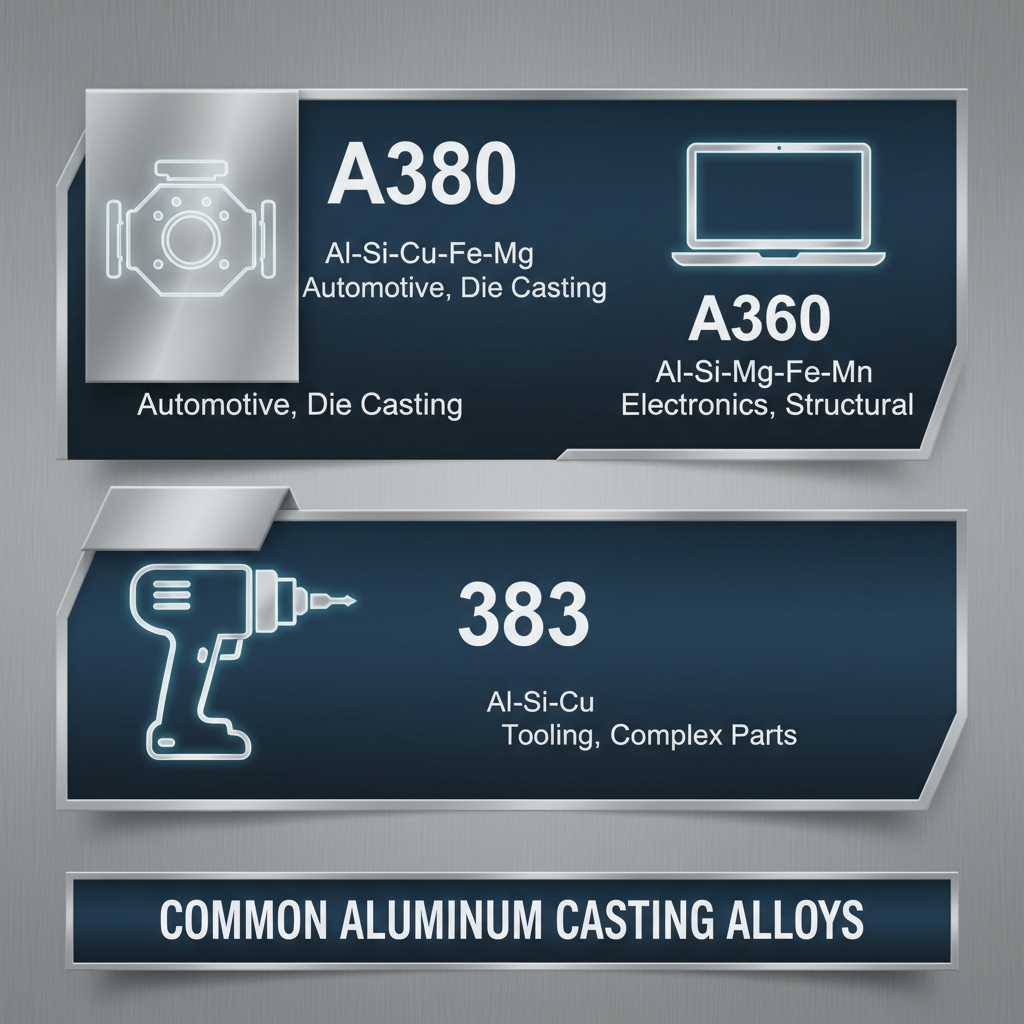
When you choose an aluminum die casting alloy, fluidity dictates how well molten metal fills dies, directly affecting cycle times and part quality.
How Does Fluidity Affect Aluminum Die Casting Alloys?
- High fluidity shortens fill time, reducing turbulence and gas entrapment.
- Low fluidity risks incomplete molds in complex geometries, leading to scrap.
- Alloy tweaks like added silicon enhance flow by 20%, speeding up your runs.
But what about the cooling phase?
What Role Does Shrinkage Play in Aluminum Die Casting Alloys?
- Typical 0.5-1.5% contraction demands precise gating to maintain tolerances.
- High-shrinkage alloys require compensatory die design for uniform results.
- Controlled cooling minimizes warping, especially in thin sections you produce.
Can Viscosity Influence Die Life with Aluminum Die Casting Alloys?
| Factor | Alloy Example | Process Effect | |
|---|---|---|---|
| Fluidity | High-silicon | Faster cycles, less wear on dies; extends tool life by reducing erosion. |
Analysis: Lower viscosity alloys cut die wear by 25%, lowering your maintenance costs and enabling longer production runs. For more on optimizing our die casting process , explore advanced techniques.
Key Takeaway Evaluating process dynamics helps you avoid bottlenecks, ensuring smoother operations and higher throughput in your foundry.
Defects in Aluminum Die Casting Alloys
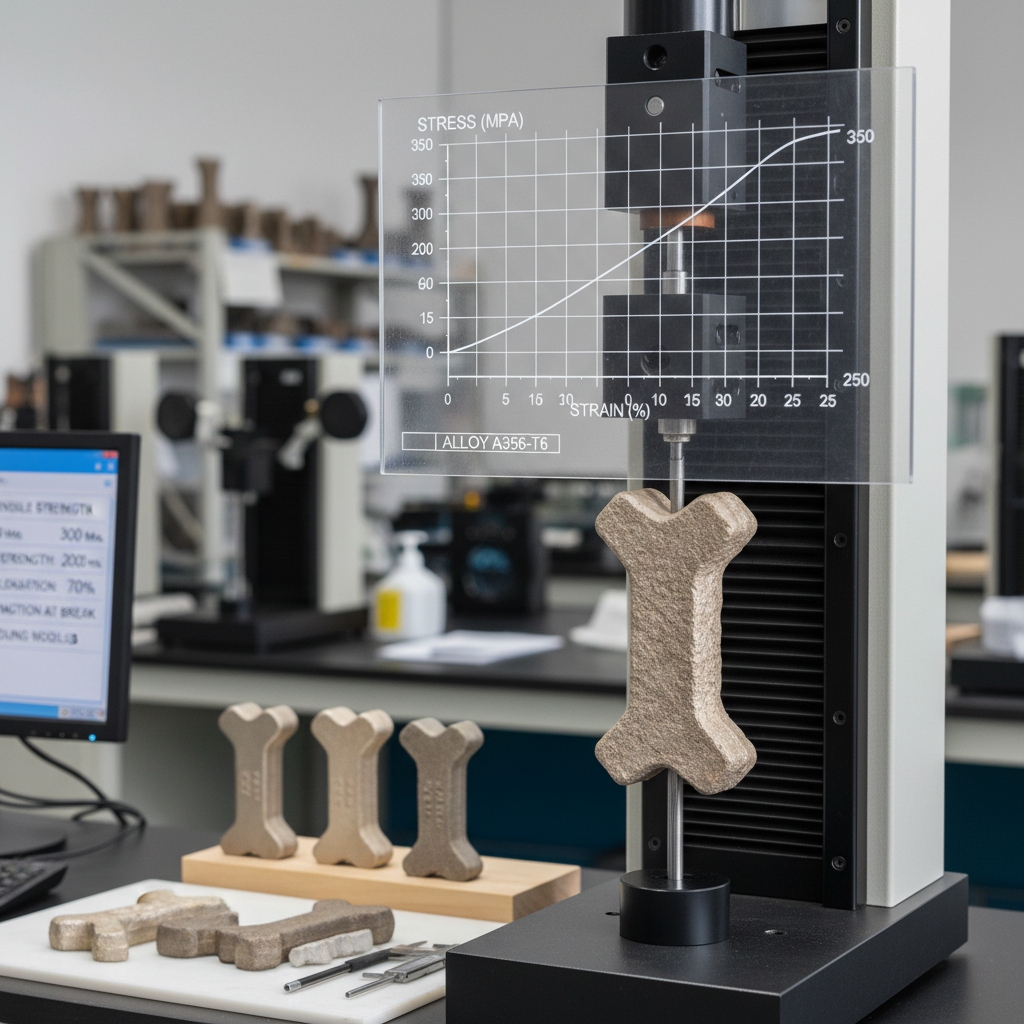
Defects like porosity plague aluminum die casting alloys if not managed, creating weak spots that compromise final part integrity.
What Causes Hot Cracking in Aluminum Die Casting Alloys?
- Rapid cooling stresses high-copper alloys, leading to fissures under load.
- Inadequate venting traps gases, exacerbating cracks during solidification.
- Thick sections amplify thermal gradients, increasing your reject rates.
Now, let’s address surface issues.
How to Prevent Die Soldering with Aluminum Die Casting Alloys?
- Opt for low-copper alloys to reduce metal-to-die bonding and sticking.
- Apply release agents consistently to protect dies across cycles.
- Keep pour temperatures below 700°C, preserving alloy performance.
Why Monitor Porosity Risks in Aluminum Die Casting Alloys?
| Defect | Cause | Prevention | |
|---|---|---|---|
| Porosity | Gas entrapment | Degassing and finer grains; cuts reject rates by 30% in high-volume production. |
Analysis: Proactive monitoring of porosity via alloy purity slashes scrap, saving you time and resources on rework.
Key Takeaway Tackling defects head-on with the right aluminum die casting alloy safeguards quality, reducing downtime and ensuring consistent output.
Product Properties from Aluminum Die Casting Alloys

Aluminum die casting alloys deliver tailored strength and ductility, allowing you to match properties precisely to end-use demands in demanding sectors.
How Does Strength Vary in Aluminum Die Casting Alloys?
- Tensile strength reaches up to 45 ksi in heat-treatable grades for structural roles.
- Yield strength improves with magnesium addition, enhancing load-bearing capacity.
- Balanced compositions avoid brittleness, suiting dynamic loads you encounter.
What about flexibility?
What Impacts Ductility Levels of Aluminum Die Casting Alloys?
- Higher silicon lowers elongation to 3-5%, trading formability for castability.
- Pure aluminum variants offer 10-20% elongation, ideal for post-forming.
- Alloy balance prevents cracking during bends or impacts.
Why Prioritize Hardness in Aluminum Die Casting Alloys?
| Property | Alloy Range | Application Fit | |
|---|---|---|---|
| Hardness | 70-150 Brinell | Wear parts; higher ratings enhance longevity by resisting deformation 40% better. |
Analysis: Targeting optimal hardness via alloy choice extends part life, minimizing failures in demanding environments like aerospace, as seen in our die casting applications .
Key Takeaway Focusing on mechanical properties equips you to build robust products that perform reliably across applications.
Corrosion Resistance of Aluminum Die Casting Alloys
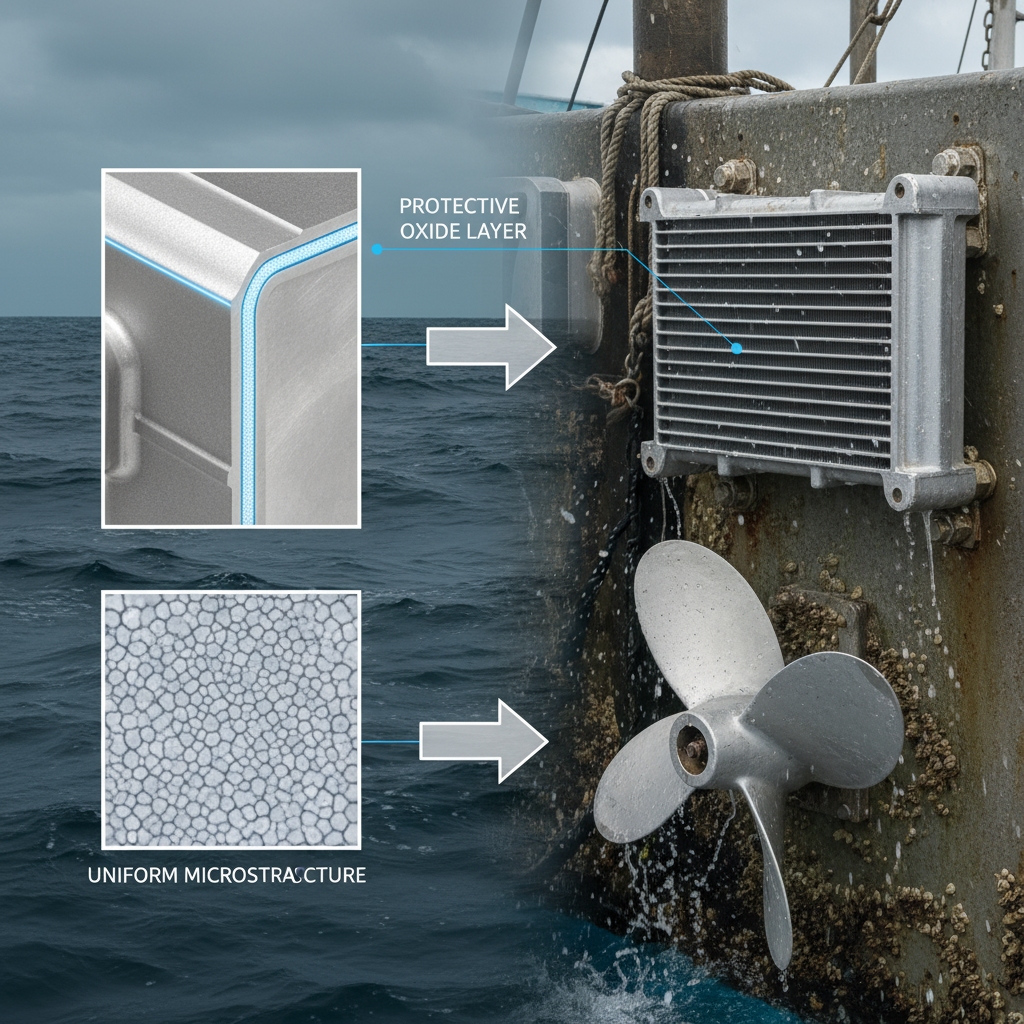
Corrosion undermines aluminum die casting alloys in moist environments, but select compositions provide effective protection to extend service life.
Which Alloys Excel in Saltwater for Aluminum Die Casting Alloys?
- Low-copper grades like 360 resist pitting, maintaining integrity in marine settings.
- Anodizing builds a robust oxide layer for added defense.
- Silicon content under 9% minimizes chemical attack on exposed surfaces.
How does environment factor in?
How Does Setting Affect Aluminum Die Casting Alloy Choice?
- Marine applications need high-magnesium alloys for superior barrier films.
- Industrial fumes require zinc-free options to avoid accelerated degradation.
- Salt spray testing verifies endurance beyond 500 hours for reliability.
What Tests Verify Resistance in Aluminum Die Casting Alloys?
| Environment | Best Alloy | Protection Level | |
|---|---|---|---|
| Saltwater | 360 | Excellent; forms stable oxide, reducing degradation by 50% over standard alloys. |
Analysis: Salt spray tests confirm corrosion performance, guiding you to alloys that cut maintenance by half in exposed uses.
Key Takeaway Choosing corrosion-resistant aluminum die casting alloys future-proofs your components, lowering long-term costs in aggressive atmospheres.
Wear Resistance of Aluminum Die Casting Alloys

Wear erodes aluminum die casting alloys in sliding applications, but reinforced variants withstand friction to deliver longer-lasting parts.
How Do Alloys Handle Friction in Aluminum Die Casting Alloys?
- Silicon particles harden surfaces against abrasion in high-contact areas.
- Copper enhances load-bearing under shear, boosting durability.
- Low-wear grades endure 10x more cycles than pure aluminum equivalents.
What enhances motion durability?
What Improves Durability in Moving Aluminum Die Casting Alloys?
- Heat treatment elevates surface hardness for sustained performance.
- Alloy dispersoids reduce galling in reciprocating motions.
- Lubrication compatibility extends operational life by 30% in assemblies.
Why Test Abrasion Tolerance for Aluminum Die Casting Alloys?
| Alloy | Wear Metric | Benefit | |
|---|---|---|---|
| B390 | High silicon | Resists abrasion; outperforms others by 60% in piston-like uses. |
Analysis: Abrasion tests highlight wear leaders, helping you select alloys that slash replacement needs in high-friction scenarios, especially in automotive via our die casting process .
Key Takeaway Prioritizing wear-resistant aluminum die casting alloys sustains performance, supporting efficient, low-maintenance operations.
Surface Finish of Aluminum Die Casting Alloys
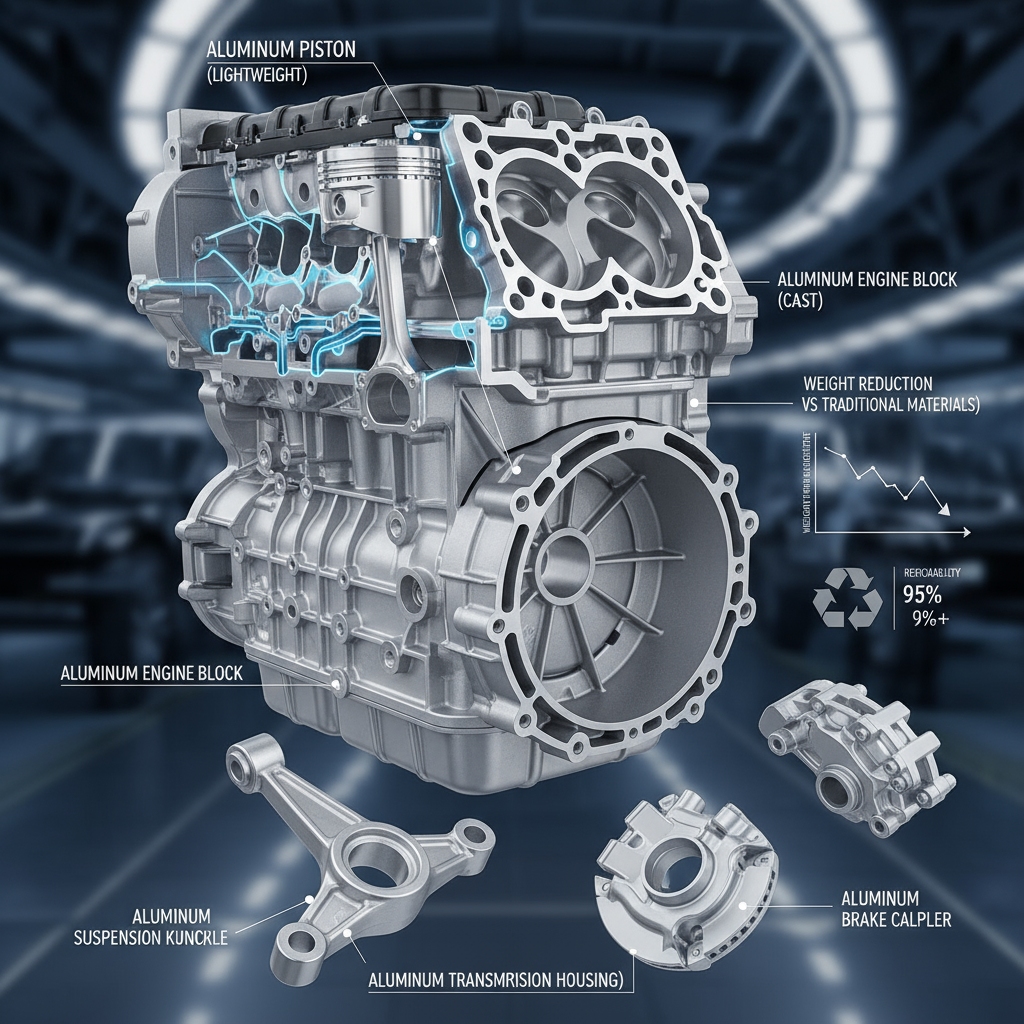
Surface quality in aluminum die casting alloys influences aesthetics and function, with compatible alloys enabling smooth results after minimal post-processing.
Which Alloys Anodize Easily in Aluminum Die Casting Alloys?
- Pure grades form uniform oxide layers for consistent coverage.
- Low-iron content prevents pitting during plating operations.
- 500-series alloys suit decorative chroming for visible components.
How does machinability tie in?
How Does Machinability Affect Post-Processing of Aluminum Die Casting Alloys?
- Free-machining alloys reduce tool wear by 25%, streamlining your workflow.
- Silicon aids chip formation for clean, precise edges.
- Balanced compositions accelerate finishing by 15% overall.
What Finishes Enhance Aesthetics for Aluminum Die Casting Alloys?
| Finish Type | Alloy Suitability | Outcome | |
|---|---|---|---|
| Anodizing | 6061 | Glossy, durable; improves corrosion resistance by 2x for visible parts. |
Analysis: Anodizing-compatible alloys elevate appearance, adding value through enhanced durability and visual appeal.
Key Takeaway Selecting finish-friendly aluminum die casting alloys simplifies post-processing, delivering polished products that impress clients.
Common Aluminum Alloys for Die Casting
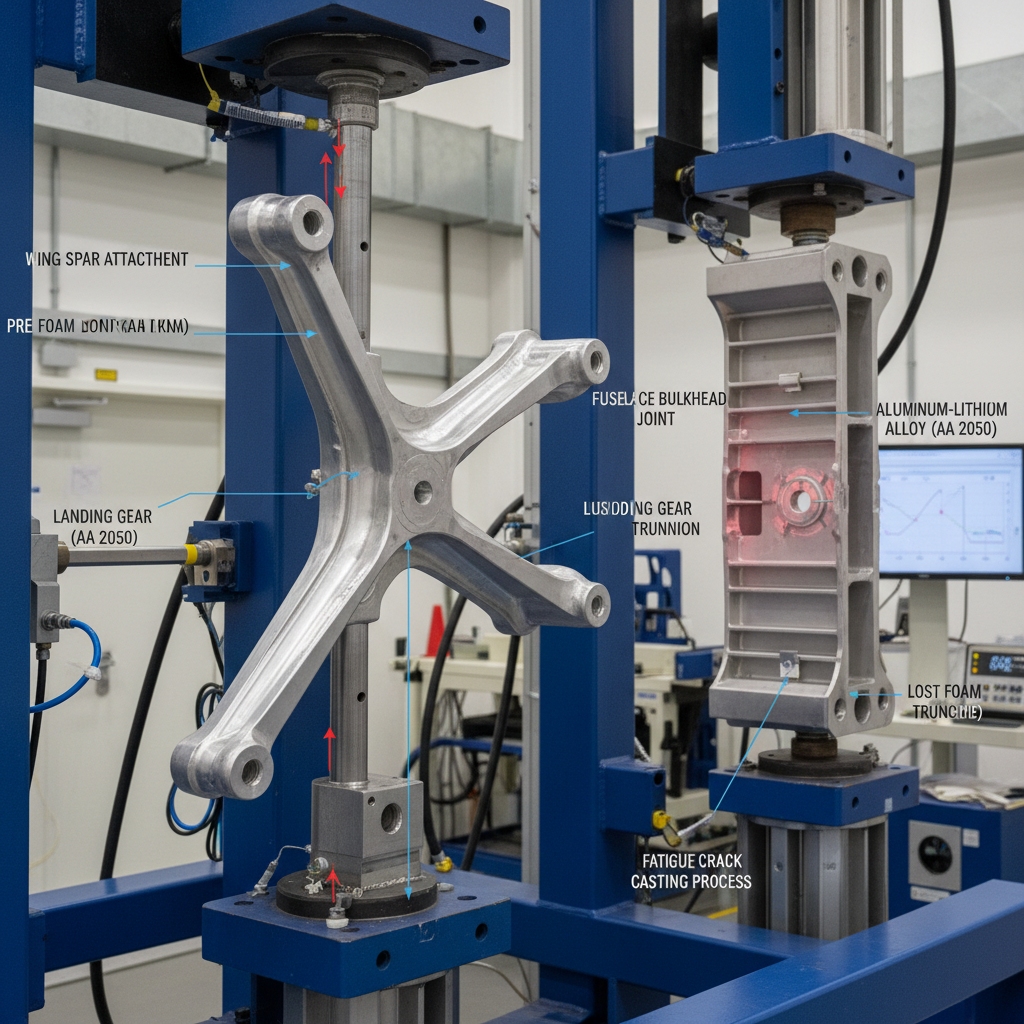
Popular aluminum die casting alloys like A380 provide proven reliability for general applications, leveraging their track record for efficient production.
What Is A380 and Its Uses in Aluminum Die Casting Alloys?
- Versatile with 7-9% silicon for excellent fluidity in complex molds.
- Ideal for automotive housings and brackets requiring balanced properties.
- Offers 40 ksi strength at a cost-effective price point.
How does A360 stack up?
How Does A360 Compare in Aluminum Die Casting Alloys?
- Superior corrosion resistance suits marine and outdoor parts.
- Excellent pressure tightness for valves and enclosures.
- Provides 20% elongation for easy machinability.
Why Choose 383 for Complexity in Aluminum Die Casting Alloys?
| Alloy | Key Trait | Typical Use | |
|---|---|---|---|
| A380 | Fluidity | Engine components; versatile for high-volume, reducing costs 10-15%. |
Analysis: A380’s broad applicability makes it a go-to choice, optimizing your production for diverse, economical runs.
Key Takeaway Knowing staples like A380 accelerates decisions, ensuring you deploy reliable die casting alloys without extensive testing.
Comparing Aluminum Die Casting Alloys

You compare aluminum die casting alloys to evaluate trade-offs in strength, cost, and suitability for specific project requirements.
A380 vs. A360: Differences in Aluminum Die Casting Alloys?
- A380 offers better flow for thin-walled designs and faster cycles.
- A360 excels in leak resistance for pressurized applications.
- A380 is cheaper but provides less ductility overall.
When to opt for alternatives?
When to Pick B390 Over 518 in Aluminum Die Casting Alloys?
- Choose B390 for high-wear pistons in engines.
- Select 518 for weldable marine fittings needing corrosion protection.
- B390 costs 20% more but delivers extended longevity.
How Do Costs Align with Benefits in Aluminum Die Casting Alloys?
| Comparison | Strength | Cost Impact | |
|---|---|---|---|
| A380 vs. A360 | A380 higher | A380 saves 15% on volume runs despite moderate corrosion. |
Analysis: Cost-benefit matrices favor A380 for balanced needs, trimming expenses while maintaining quality in our die casting services .
Key Takeaway Comparisons empower precise choices, aligning alloy benefits with your budget and performance goals.
Selecting Aluminum Die Casting Alloys
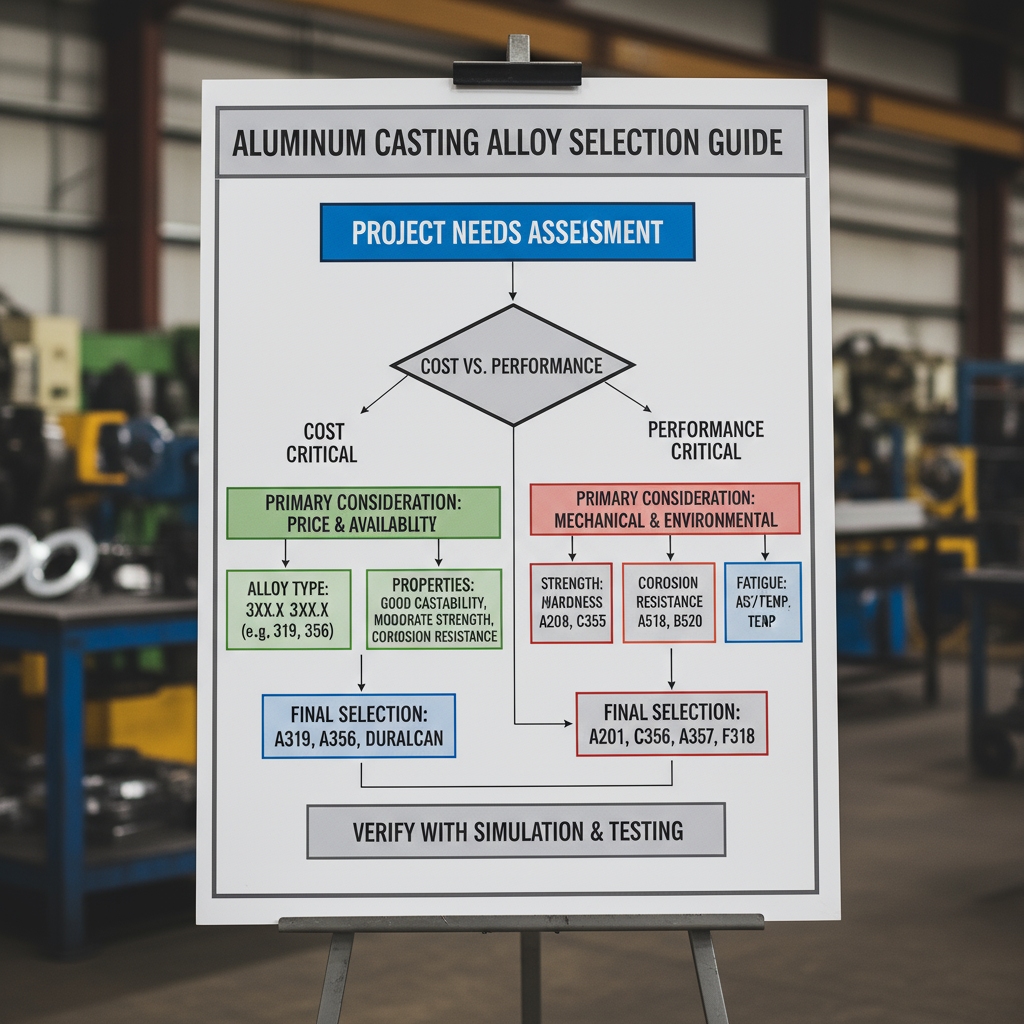
Selecting the right aluminum die casting alloy begins with assessing your specifications to ensure seamless compatibility from design to production.
How Do You Assess Needs for Aluminum Die Casting Alloys?
- List mechanical and environmental demands upfront for clarity.
- Review industry standards to meet compliance requirements.
- Prototype early to validate alloy properties in real scenarios.
If corrosion is key?
What If Corrosion Is Critical in Aluminum Die Casting Alloys?
- Favor low-copper, high-magnesium grades for inherent protection.
- Test in simulated conditions to confirm long-term performance.
- Apply coatings as a barrier for enhanced resilience.
Why Consult Guidelines When Selecting Aluminum Die Casting Alloys?
| Step | Tool | Outcome | |
|---|---|---|---|
| Assessment | NADCA charts | Matches alloy to needs; prevents 20% defect risk through data-driven picks. |
Analysis: Guidelines like NADCA streamline selection, minimizing errors and accelerating your project timeline.
Key Takeaway A methodical approach to selection delivers optimal die casting alloys, driving efficiency and success in your endeavors.
Conclusion: Elevate Your Casting with Smart Alloy Choices
You’ve explored the nuances of aluminum die casting alloys, from properties to selections, equipping you to overcome common pitfalls and achieve peak performance. Ready to implement? Contact our experts for a customized consultation—we’ll analyze your needs and recommend alloys that fit seamlessly. Our vision: Partner with you to pioneer lightweight, durable solutions that propel your business forward in a competitive landscape.
FAQ
Can A380 Aluminum Die Casting Alloy Handle High-Heat Parts?
Yes, but with limits—A380 manages moderate heat via balanced strength, though B390 excels in extremes to avoid deformation.
Is A360 the Best Aluminum Die Casting Alloy for Outdoor Tools?
Yes, often—A360’s corrosion resistance suits exposed uses, outperforming A380 without needing extra coatings.
How Does 383 Aluminum Die Casting Alloy Affect Production Speed?
It boosts speed—383’s fluidity cuts fill times versus A360, ideal for high-volume while keeping machinability strong.
What If My Project Needs High Wear in Aluminum Die Casting Alloys?
Choose B390—its wear resistance fits friction apps like pistons, extending life beyond standard alloys.
Can 518 Aluminum Die Casting Alloy Suit Architectural Parts?
Yes, well—518’s finish and corrosion traits make it perfect for visible, durable components without castability trade-offs.



